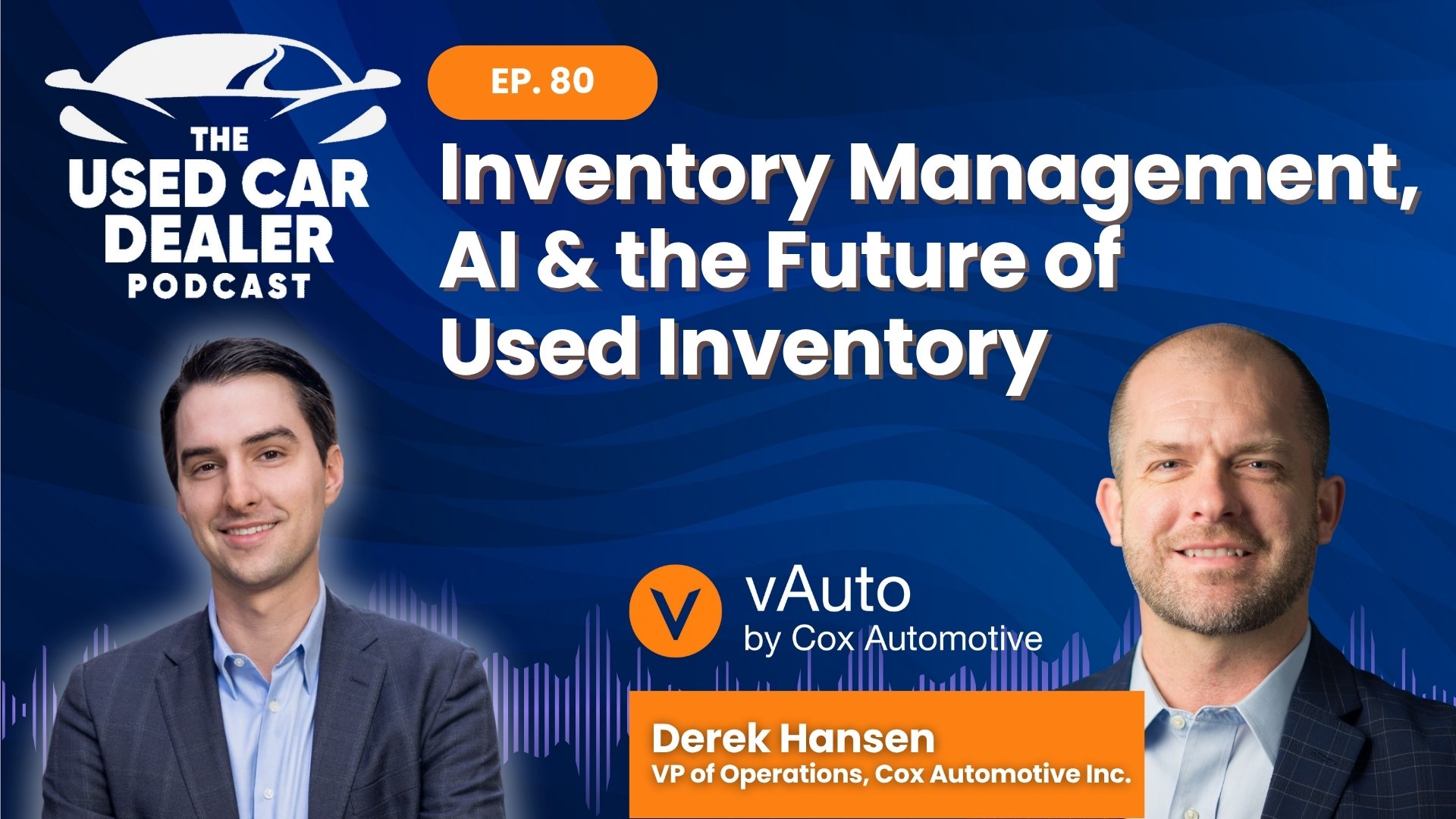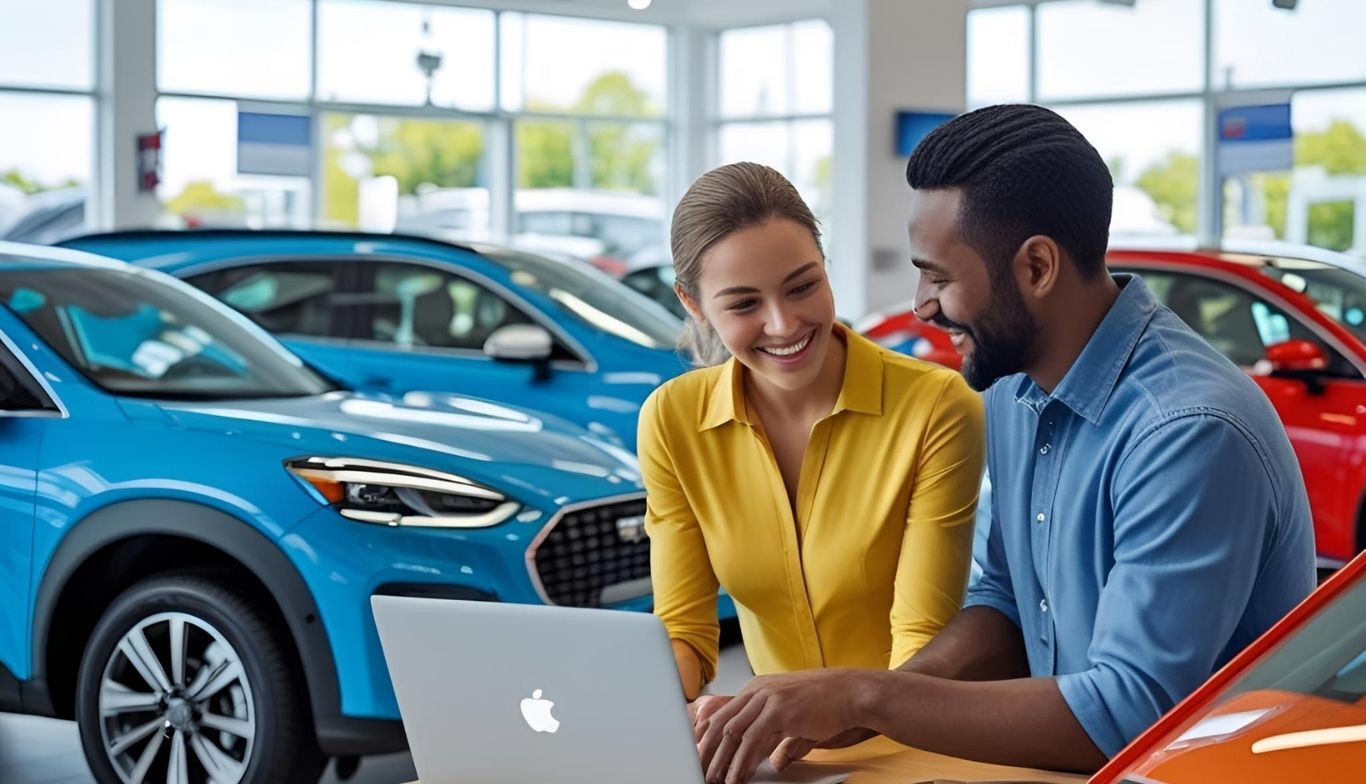In this episode of the Used Car Dealer Podcast, Zach is joined by Amir Hever, CEO and Co-founder of UVeye. They discuss the story behind UVeye's cutting-edge automatic vehicle inspection technology, explore how AI is shaping customer experience, and the pivotal role of innovation in redefining transparency and trust in dealerships.
Zach: Zach here, and we have a really exciting entrepreneur on the podcast today, Amir Hever, who is the CEO and co-founder of UVeye, a leading automatic vehicle inspector provider that recently announced a $100 million funding round that included GM and Carmax. Amir, thanks so much for joining me on the podcast today.
Amir: Absolutely. Thank you for having me, Zach.
Zach: So, for the audience who might not be familiar with UVeye, tell us a little bit about the company, why you co-founded it, and a little bit about your entrepreneur background story.
Amir: So, in a nutshell, UVeye, we're kind of the MRI for vehicles, right? It first started in 2016; we aimed at solving a AAA homeland security issue that we saw no one is solving - to inspect the undercarriage of a vehicle and to really find security threats, whether it's explosive devices, weapons, drug smuggling, contraband, anything that doesn't really belong to the undercarriage of the vehicle, in an automated efficient way. We saw a lot of secured facilities using mirrors and other handheld devices. We wanted to give them something more sophisticated that can really find and detect everything.
This is how we started, but after installing a lot of systems in security facilities like airports, seaports, and military bases, we started seeing all the data. It was interesting to see that not only could we find security threats but also the wear of the vehicle, like oil leakages, broken parts, missing parts, rust at different levels, and severities. We then started to shift a bit more to the commercial side because understanding the condition of the vehicle, both safety-related and mechanical-related, is really, really important.
Zach: Talk to me also about the product evolution of UVeye. You founded the company in 2016 with different use cases, and now the product has evolved, and even includes AI. Talk a little bit about that as well in the product evolution.
Amir: As I said, we started from the homeland security side to solve security problems. Over time, we shifted and transitioned into the commercial side. We started gathering and seeing the wear and tear, then introduced it mainly to car manufacturers. They were really excited. We started installing systems in manufacturing lines to help with quality assurance, to make sure the vehicle was assembled correctly, with no damages or issues. Then COVID hit in 2020, and we understood that we needed to start focusing on the aftermarket as well.
We decided to focus on three main verticals: dealerships, used car marketplaces, and auction sites, and commercial fleets. For dealerships, it's to help them inspect cars a lot faster and provide a full tool for service and used car managers. For used car marketplaces and auction sites, it's to give them a solution to inspect and understand the car valuation and to share with their customers the full condition of the vehicle. Commercial fleets, we're working with some of the biggest in the US and Europe to help them maintain their vehicles and make sure they're safe to use. What all of them have in common is providing a better customer experience and a seamless inspection of the vehicle. To inspect a vehicle with our system, they simply drive through the system without stopping, and within a few seconds, they get a full condition report.
Zach: Wow, that's really impressive. And it kind of leads me to my next question. So, I see you've raised some strategic funding from the likes of GM. What is a dealer's reaction to your product? Like a dealership versus an OEM.
Amir: The reaction for the product is not that different. Everyone understands today that we need to ensure customers are driving safer vehicles, both the OEMs and the dealerships. Also, everyone wants to give a better customer experience and share more data with their customers. We all, as customers, are used to getting more data and seeing everything.
The only thing that may be slightly different is that OEMs have slightly more data points with their internal systems and information from connected vehicles. We work with partners like GM and other OEMs to understand what kind of products, trends, or insights we can provide consumers by combining all the data together. In terms of customer experience and intention, they’re pretty much the same, and that's important, and this is what we help them to do.
Zach: So for dealerships, why is rebuilding trust critical, and how could dealerships harness AI software and data for enhanced transparency?
Amir: The world is different. We, as consumers, are used to consuming data; we have algorithms today that can pretty much do everything for us. You can have a full conversation with an algorithm; you can generate any image based on a few sentences that we provide. It's really essential to show and explain to customers their real vehicle condition.
If I go to a dealership and they tell me I have an oil leakage, the first thing I probably would tell them is, "show me." Show me that there is an oil leakage, explain so I can really understand what the problem is.
So I think we are able to give the dealerships the ability to be more transparent with their customer. Show them really, really fast, how we find the issue and why we detected an issue. The customer can be part of the process of inspecting the vehicle, and the more algorithms, the more machine or computer vision software, or even hardware that we're able to provide the dealerships with, they're able to service their customers a lot better.
Zach: And why are customer experience rates going down? And how do you think AI can be used to enhance customer experience and create efficiency within the workplace and in a dealer setting?
Amir: It's kind of like the last answer, right? We're used to seeing what is wrong with the car. It's not enough just to tell them what the problem is. We really need to see it. And I think also in the last few years, we all became more efficient with our time. We have mobile phones that are connected to the internet all the time. We're using different services that help us to be more efficient, like Uber, Doordash, and others. So we consume a lot more data a lot faster. And the most expensive resource that we have right now is our time. We want to make sure both our dealerships are more efficient in the way that they inspect cars, but also customers—they expect the dealership to service them a lot faster, a lot quicker, and to show them more data. And this is exactly what we're doing with the dealership. We're able to make the dealership more efficient but also to appreciate and make the customer's time more efficient so they can get serviced a lot faster, a lot better, and with more information that the dealership can provide them with, if that makes sense.
Zach: Why persist with outdated methods like the Penny check as tech advances and tools are improving? Can you also explain for the audience the concept around Penny check as well?
Amir: Absolutely. A Penny check is a way to inspect and understand if the tire or the treads are too worn. You simply place a penny into the tread of the groove upside down, so the penny should be going into the tread head first. Then you need to examine the penny. If you can see Abe's head, it means that your tread is shallow. And you need to do this in every tread at multiple locations to be more accurate. But even just explaining it took me more time than what it would take us to do an inspection with UVeye, where you just drive through the system. And if you think about how long it will take you to really inspect every tread, putting the penny in multiple locations—it takes a long time.
And if we’re thinking about dealerships, just in the last 10 years, right, we have today over 290 million cars registered in the US. In 2012, we had close to 240 million cars. That’s an increase of 15% over the last 9 to 10 years. That's a lot. And when we’re thinking about the number of things that we need to inspect in every car—if a service advisor or a technician would be able to stick a penny in every tread at multiple locations, put the car on a lift for every car that goes into the dealership, and do a full inspection—that really takes a long time. And eventually, you need to compromise on the number of checks or inspections that you’re doing. But if you want to keep growing your business, keep being able to have full inspections, full condition reports, and talk about the N PVI, the multiple points of inspections that need to be conducted for every vehicle that goes into the dealership—it’s really important to start being able to automate some of the processes. Like the inspection, making sure you cover the tires can be a really safety hazard if you have an issue, if you have any bulges or cuts or anything else. Or if you have any safety concerns in the undercarriage or the exterior—if you have chips in the windshields, broken mirror housing, burned headlights or tail lights or something is broken—you can’t do everything manually. Plus, you need to record everything that you inspect. This is exactly why you need to have more automated tools that will be able to give you exactly those inspections. So, you don't need to compromise on the level of service that you’re providing your customers but also at the same time, do it a lot faster so you can support and grow the business as well.
Zach: Makes a lot of sense, especially for a dealership that has a lot of inventory or fleet management. So I could definitely see those use cases. In the auto industry, especially on the retail side, you're seeing more and more vendors promote, "We have AI in our product." What's the unique AI use case that UVeye has?
Amir: So, we are based on AI, right? As the vehicle goes through our system, we break the vehicle into different components. Then basically, we have different models that run on different components and different parts of the vehicle. This is our core business, our core technology—these are engines and models that we developed while collecting data from millions of cars. I do think there are a lot of products right now that integrate with other AI engines or other AI products for the dealerships. Now that we’re seeing a lot of generative AI tools and tools like ChatGPT and others.
I think the dealership is already using a lot of different tools. They just need to make sure that, eventually, all the tools they are using integrate with each other. So they will not need to use different tools for different things, but to have a few tools that are doing the most for them. So they can really leverage and still be efficient, right? If they start bringing in too many AI tools, they'll be inefficient. So this is my take on all the products that you're seeing right now. But definitely, for UVeye, AI is our core. The computer vision algorithms, image processing algorithms, and machine learning algorithms that we have are the core of our technology.
Zach: So what's your message to dealers who are thinking about leveraging UVeye and its technology? What sort of dealership is it, right? Maybe size-wise, inventory-wise.
Amir: So I think it's right for all of the dealerships. Every dealership that is using UVeye was able to see that they're able to accomplish a lot more in less time. And it's not just on the service side, it’s also on the F&I and it’s also on the used cars. We're serving all the departments within the dealerships. So we’re seeing that the NPS, the net promoter score, which measures the engagement and the satisfaction from the customer experience at the dealership, is increasing. The service department can be a lot more profitable. We're helping technicians to be more efficient. So, every dealership that would like to grow the business and provide a better customer experience should use UVeye.
Zach: What are your thoughts on some of the automotive futures like EV or autonomous tech? What are you the most excited about from your lens?
Amir: I'm excited about pretty much everything, I have to admit. The automotive industry in the past 5 to 7 years is definitely going through a lot of changes, from EVs and more. EVs are not just changing the engine of the car and how it drives, but also the entire experience that a driver has in the car. The infotainment systems, autonomous driving, the virtual assistant that we have inside a car – all these are changing. People used to buy a car because of the engine size, but today, they look at how big the screen is in the car, what kind of sensors and how many cameras I have. Customers are different today, so it's very exciting to see the auto industry changing and evolving. I think it will keep changing in the next few years tremendously – the way we buy cars, the things that are important for us in a car. And this is why we’re seeing more OEMs invest more in the infotainment systems and things that go inside the car. The technology, especially with all the AI, generative AI that we're seeing right now, will change the experience of both the driver and how we are buying vehicles.
Zach: So lastly, can you give us an idea of what’s coming down the pipeline from UVeye and yourself for the rest of 2023 and going into early 2024?
Amir: Absolutely. A bit over a month ago, we announced and released a new product called Apollo. It helps to inspect the interior of the car. We are now focusing more on EVs to be able to inspect the battery condition, also to inspect the different sensors that connected cars, smart cars are starting to have more and more. So we can really support all the advancements the EVs and all the new technology that vehicles are starting to come with. So we can still show 100% of the inspection of the condition report that will include all the information about the vehicle.
Zach: Wow, that’s exciting, especially on the EV battery front because I feel like that’s still a big problem that definitely needs to be solved in the industry.
Amir: Absolutely. There is a lot of different ways to inspect the battery condition. The computer of the vehicle monitors the different battery cells, but also you need something from the exterior that will tell you if you have any overheating problems, any dead battery cells, or issue with some of the battery cells. And this is exactly what we're going to introduce in 2024.
Zach: Wow. Well, I have to say, Amir, it’s been an awesome episode of the podcast. I’ve learned a lot, and I think everyone listening is definitely going to check out UVeye. So thank you so much for being generous with your time and joining us on the podcast today.
Amir: Absolutely, it was a great time for me as well, and thanks very much for inviting me, Zach.

.jpg)





.jpg)
.jpg)
.jpg)
.jpg)


.png)
.png)
